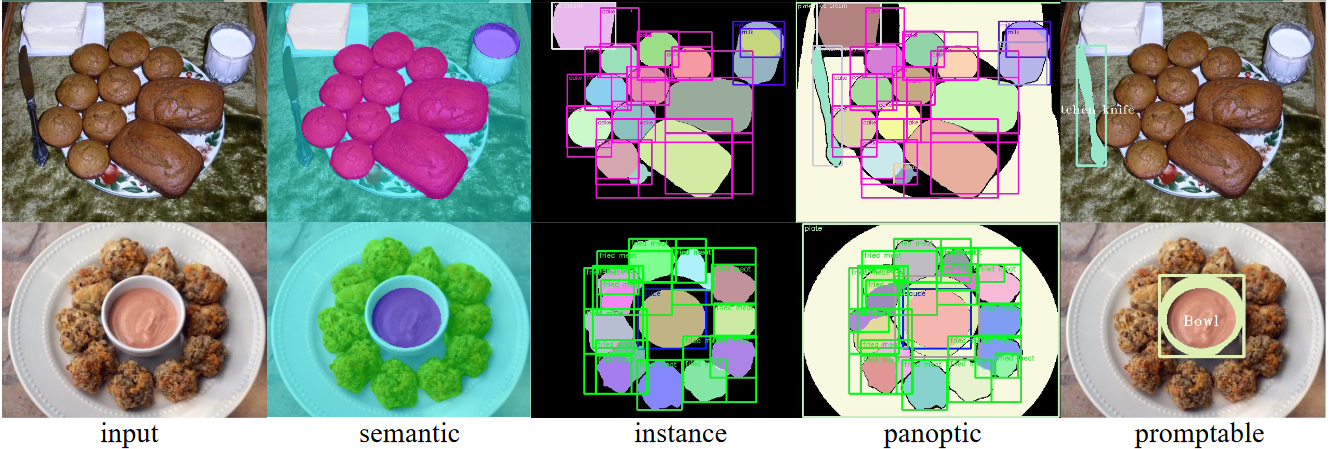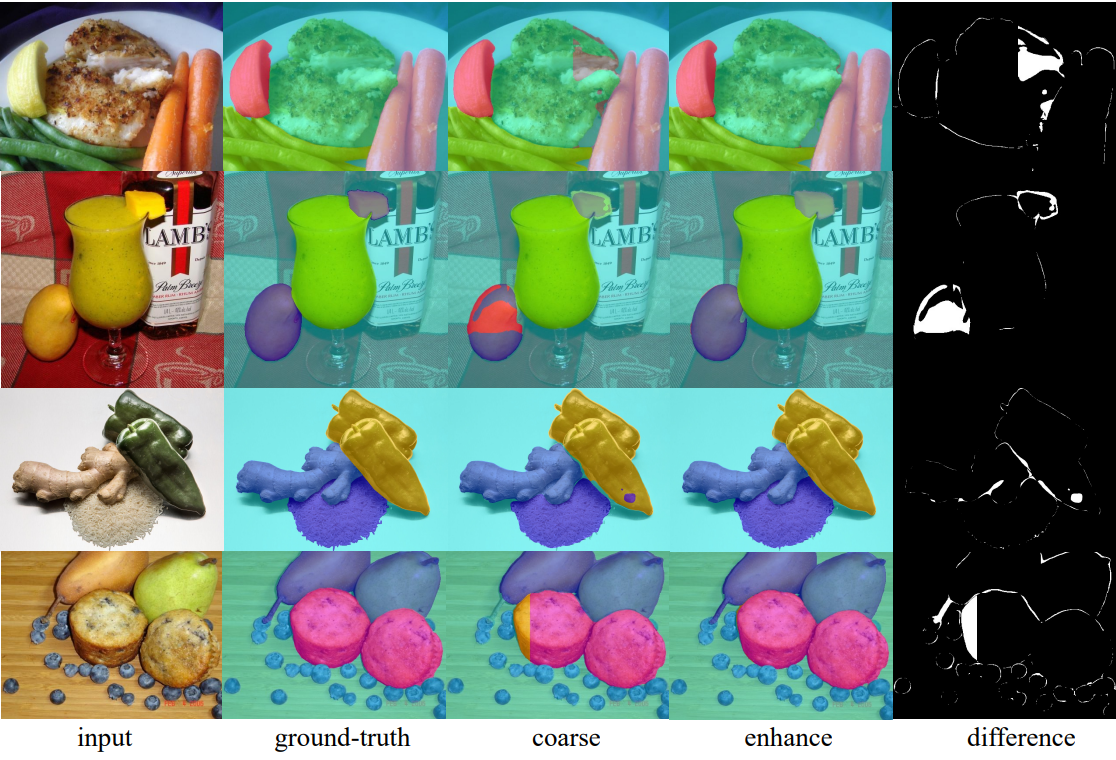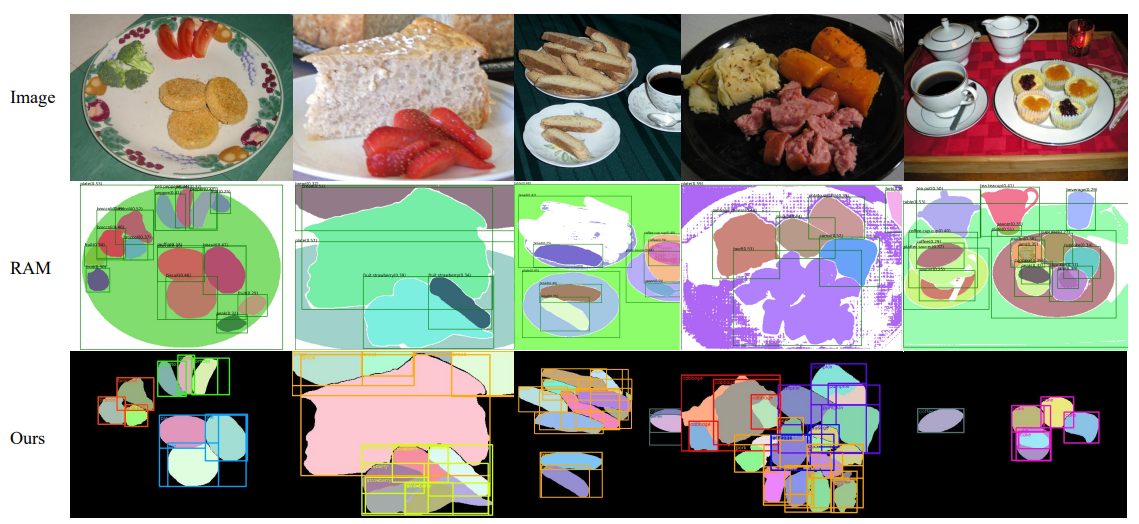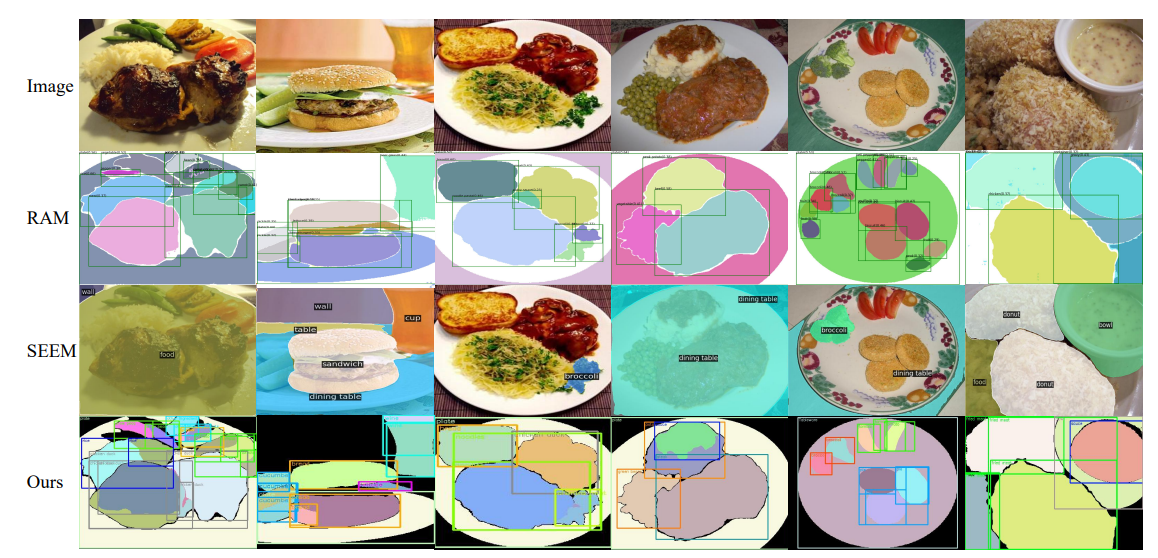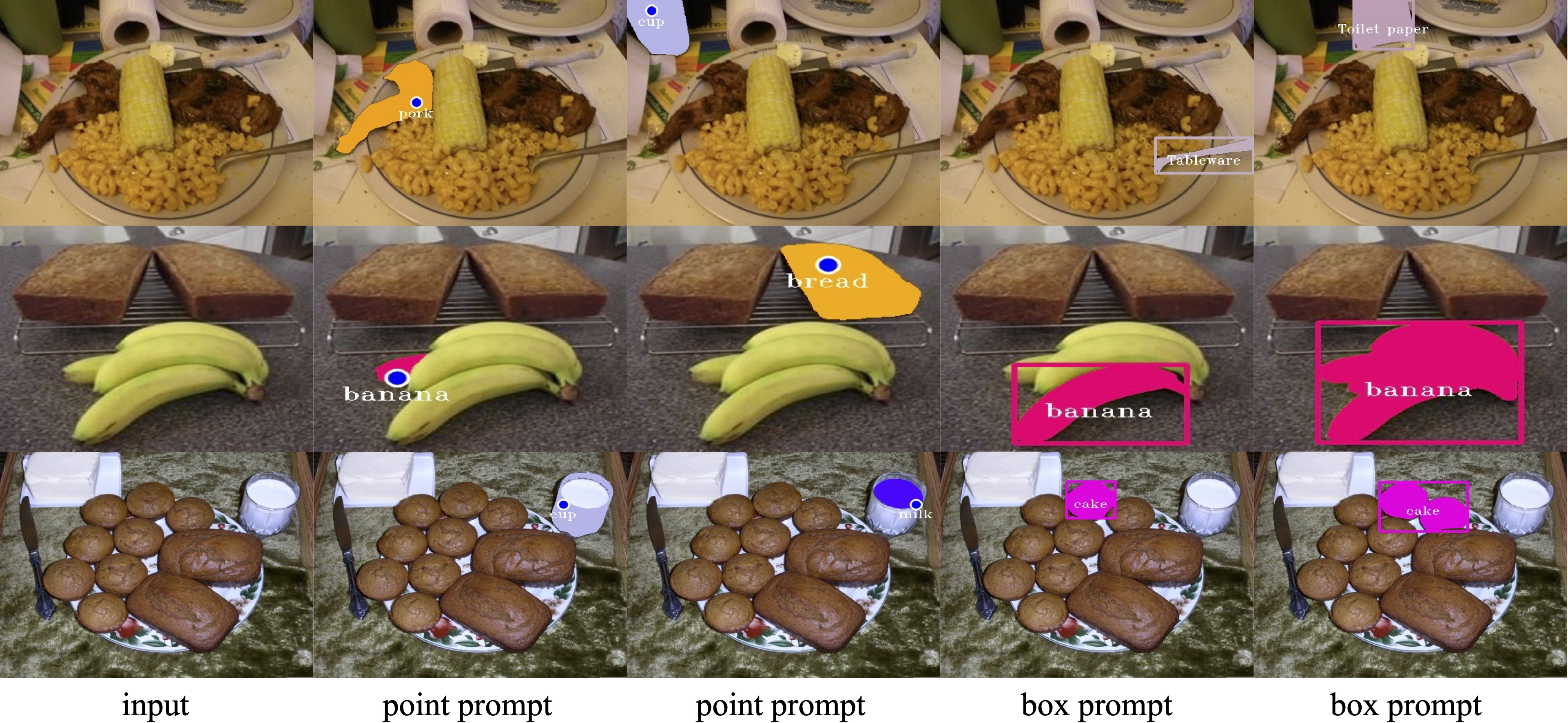This is the official PyTorch implementation of our paper: FoodSAM: Any Food Segmentation.
Segment anything Model(SAM) demonstrates significant performance on various segmentation benchmarks, showcasing its impressing zero-shot transfer capabilities on 23 diverse segmentation datasets. However, SAM lacks the class-specific information for each mask. To address the above limitation and explore the zero-shot capability of the SAM for food image segmentation, we propose a novel framework, called FoodSAM. This innovative approach integrates the coarse semantic mask with SAM-generated masks to enhance semantic segmentation quality. Besides, it can perform instance segmentation on food images. Furthermore, FoodSAM extends its zero-shot capability to encompass panoptic segmentation by incorporating an object detector, which renders FoodSAM to effectively capture non-food object information. Remarkably, this pioneering framework stands as the first-ever work to achieve instance, panoptic, and promptable segmentation on food images.
FoodSAM contains three basic models: SAM, semantic segmenter, and object detector. SAM generates many class-agnostic binary masks, the semantic segmenter provides food category labels via mask-category match, and the object detector provides the non-food class for background masks. It then enhances the semantic mask via merge strategy and produces instance and panoptic results. Moreover, a seamless prompt-prior selection is integrated into the object detector to achieve promptable segmentation.
Please follow our installation.md to install.
You can run the model for semantic and panoptic segmentation in a few command lines.
# semantic segmentation for one img
python FoodSAM/semantic.py --img_path <path/to/img> --output <path/to/output>
# semantic segmentation for one folder
python FoodSAM/semantic.py --data_root <path/to/folder> --output <path/to/output>
# panoptic segmentation for one img
python FoodSAM/panoptic.py --img_path <path/to/img> --output <path/to/output>
# panoptic segmentation for one folder
python FoodSAM/panoptic.py --data_root <path/to/folder> --output <path/to/output>
Furthermore, by setting args.eval to true, the model can output the semantic masks and evaluate the metrics.
Here are examples of semantic segmentation and panoptic segmentation on the FoodSeg103 dataset:
python FoodSAM/semantic.py --data_root dataset/FoodSeg103/Images --output Output/Semantic_Results --eval
python FoodSAM/panoptic.py --data_root dataset/FoodSeg103/Images --output Output/Panoptic_Results
| Method | mIou | aAcc | mAcc |
|---|---|---|---|
| SETR_MLA(baseline) | 45.10 | 83.53 | 57.44 |
| FoodSAM | 46.42 | 84.10 | 58.27 |
| Method | mIou | aAcc | mAcc |
|---|---|---|---|
| deeplabV3+ (baseline) | 65.61 | 88.20 | 77.56 |
| FoodSAM | 66.14 | 88.47 | 78.01 |
A large part of the code is borrowed from the following wonderful works:
The model is licensed under the Apache 2.0 license.
If you want to cite our work, please use this:
@misc{lan2023foodsam,
title={FoodSAM: Any Food Segmentation},
author={Xing Lan and Jiayi Lyu and Hanyu Jiang and Kun Dong and Zehai Niu and Yi Zhang and Jian Xue},
year={2023},
eprint={2308.05938},
archivePrefix={arXiv},
primaryClass={cs.CV}
}

